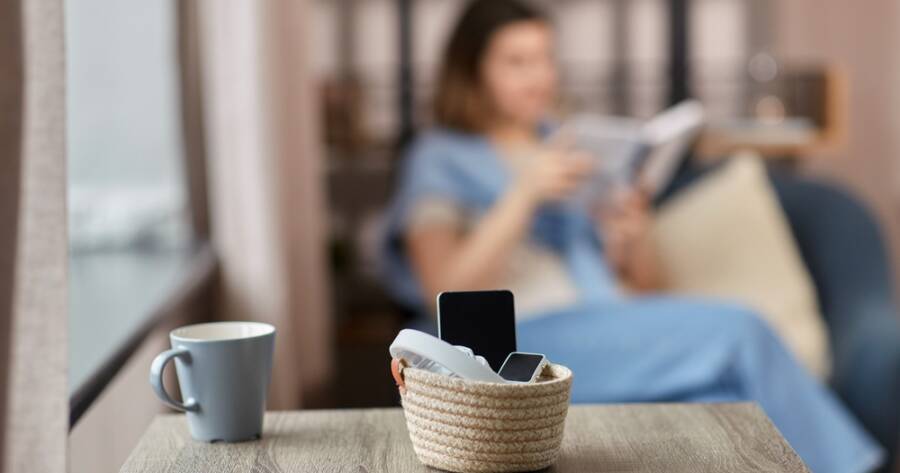Most of us spend more time on screens than we realize. Between emails, social media, and constant notifications, it’s easy to feel overwhelmed. A digital detox experiment offers a chance to reclaim focus and peace. But it isn’t always easy. Explore some common challenges of unplugging—and discover real solutions to help you get through them.
The First Days: Breaking the Habit Loop
The early stages of a digital detox are often the hardest. Our brains are used to constant stimulation, and removing screens can feel uncomfortable. Many people report reaching for their phones out of muscle memory—even when they’ve committed to unplugging.
One helpful solution is to replace screen time with something tactile or active. Go for a walk, write in a notebook, or do a puzzle. Having something to do with your hands makes it easier to break the scroll-reflex. Setting a short-term goal—like one hour without a screen—can also help build momentum without making the task feel too big.
Another key is to remove easy temptations. Place devices out of reach. Turn off nonessential notifications. Some people even switch their phones to grayscale to make them less appealing. Small steps like these can retrain your habits over time.
Dealing With FOMO (Fear of Missing Out)
One of the biggest psychological hurdles in any digital detox is the fear of being disconnected. You might worry about missing a text, an update, or something urgent. That anxiety can make it difficult to fully commit to screen-free time.
The truth is, most notifications can wait. To reduce anxiety, let a few trusted people know about your detox and give them a way to reach you in case of emergencies. You can also schedule regular check-ins—perhaps once or twice a day—to stay connected without being always available.
It may also help to remind yourself that constantly being online doesn’t equal being informed or present. Many people find that after a few days, the fear of missing out fades. In its place comes a growing sense of calm—and the realization that much of the digital noise wasn’t important after all.
Boredom and Restlessness: What to Expect and How to Manage It
When you take away digital distractions, you may start to notice how much they filled your day. The result is often boredom and restlessness. These feelings aren’t bad—they’re just unfamiliar. And they can be a gateway to something better.
To move through this stage, create a simple list of offline activities you enjoy or have been meaning to try. Reading a physical book, doing a hobby, calling a friend, or simply sitting quietly with your thoughts are all ways to reconnect with yourself.
Try not to immediately replace one distraction with another. Instead, give yourself permission to sit with boredom. This is where creativity can emerge. Many people report that after the initial restlessness fades, they experience deeper thinking and better sleep.
Social Pressure and Expectation Management
In today’s culture, quick replies are often expected. If you don’t answer a text or email within an hour, some may interpret it as rude or unprofessional. This kind of pressure makes digital detoxing feel like swimming upstream.
One solution is to manage expectations ahead of time. Use an out-of-office message or auto-reply to let others know you’re unplugging and when you’ll be back. Being upfront reduces misunderstandings and gives you mental permission to step away.
It can also be helpful to practice small detoxes before diving into longer ones. For example, try going screen-free during meals or evenings. The more you practice short detoxes, the easier it becomes to extend that time without feeling guilt or pressure.
Facing the Emotions You’ve Been Avoiding
One reason many people struggle with a digital detox is because constant connectivity can mask emotional discomfort. Scrolling offers a distraction from anxiety, loneliness, or stress. Take that distraction away, and the feelings may rise to the surface.
This is actually one of the most valuable parts of the detox experience. It gives you a chance to acknowledge what’s really going on inside. Journaling or talking with someone you trust can help you process these emotions in a healthy way.
Mindfulness practices—like meditation, deep breathing, or slow walks in nature—can also offer support. These tools help you stay present with your feelings rather than running from them. Over time, this can lead to a stronger emotional foundation and a clearer sense of purpose.
Rebuilding a Healthier Digital Relationship
A digital detox doesn’t mean you have to give up your phone or laptop forever. The goal is to reset your habits and return with more awareness. Once your detox is complete, reflect on what you missed—and what you didn’t.
This insight can help you make lasting changes. You might decide to keep notifications off, stop using screens before bed, or take regular screen-free weekends. The key is to use technology with intention instead of letting it control your time and attention.
Many people find that after a detox, they enjoy their screen time more. They use it to connect with loved ones, learn new things, or create something meaningful—instead of just filling time.
Finding Peace in Disconnection
A digital detox isn’t just about less screen time. It’s about creating space for rest, reflection, and genuine connection. The process can be challenging, especially in a world that runs on constant input.
However, with preparation and the right mindset, it’s possible to overcome those challenges—and come away feeling more balanced, focused, and emotionally grounded. Sometimes, stepping away from the screen is the first step back to yourself.

